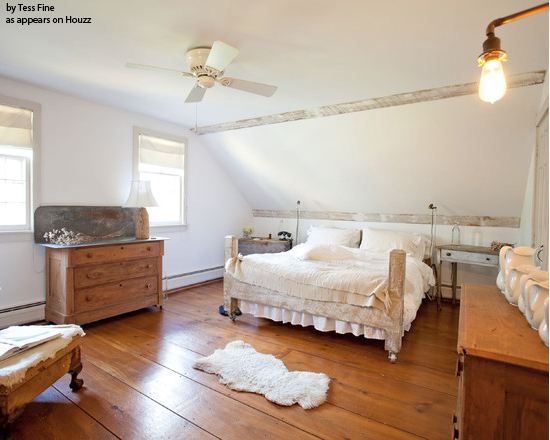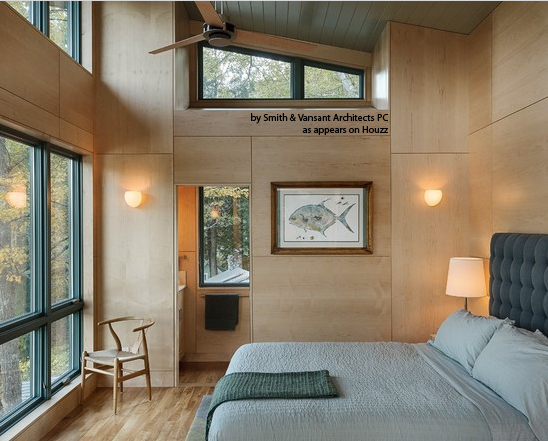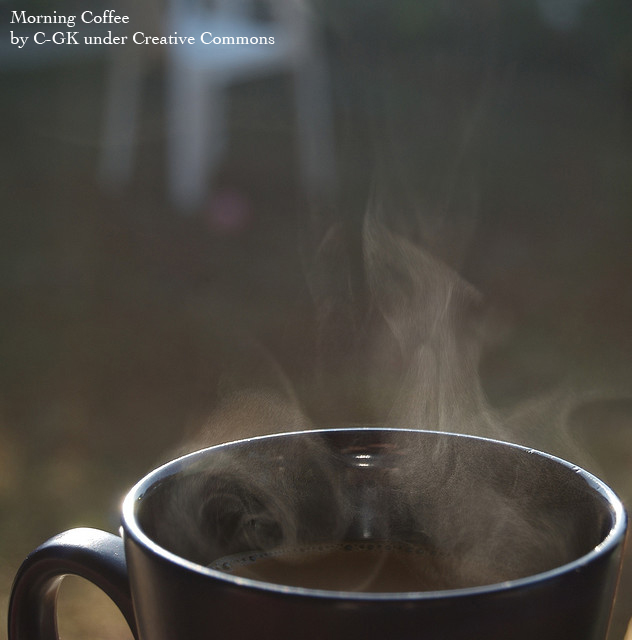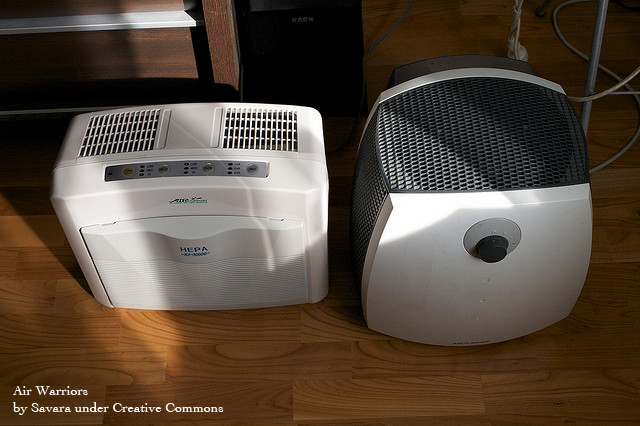Category Archives: Things We Like
Things We Like: Spring 2013 Design Trends

Post by Kyle St. Romain.
With spring fast upon us, there is lots of work to be done. March is a fun-filled month full of things to do for everyone: organizers who have long anticipated spring cleaning; gardeners anxious to get their summer planting underway; families looking forward to time with loved ones during Easter; and interior designers who are ready to shed the dark, heavy fabrics of winter for something more bright and refreshing.
To help get your home in the spring of things, we’ve put together a list of some of the hot interior design trends for Spring 2013.
Nature’s Nurture
Spring 2013 interior design is heavily influenced by nature. Whether it’s in the form of earth-tone colors or the use of organic building materials, more and more designers are drawing inspiration from organic design elements. Materials like rough-cut hardwood floors, slate countertops, and weathered concrete building elements are examples of this natural, contemporary design trend. You can also incorporate natural/living décor, such as wall hanging plants, to bring a more natural feel to your space.
Pastel Pleasure
To contrast with your natural design elements, colors from the pastel palette provide the perfect pop. Check out Pantone’s 2013 fashion color trends to get a feel for the types of colors that are in season this spring. If you need help visualizing how to put the perfect color pallet together, Pantone has also compiled several complete color palettes so you can get a sense of how these colors work together.
Here’s a hint for next season: pay attention to the Neiman Marcus Spring Catalog, as many of the colors featured on their clothing are trendy in the interior design world as well.

Creative Lighting
Light fixtures have been prominent in interior design for the past few years, and that trend is expected to continue. Using contemporary light fixtures, or light fixtures that otherwise contrast with the rest of your room’s design, is a great way to spice up a room without having to redo everything. A lot of popular light fixtures today use the old-timey Edison bulbs, which add a cool retro feel and a warm glow to your space.
Quick Tip To Freshen Up Your Bedroom This Spring
If you don’t have the budget to redo your entire bedroom this spring, don’t worry. There are a number of ways you can dramatically change the look of your room without spending much time or money. An easy way to update your bedroom this spring is to buy a new comforter, or comforter cover.
Since the bed comforter is such a large piece of fabric that is prominently displayed in your bedroom, you’ll really get a lot of bang for your buck visually. Bonus points if you can find a new comforter that’s reversible! Lightweight comforters will also help keep you cooler in bed during the warm summer months, making this a very practical update.
Are you planning any interior design projects this spring? Let us know how your project is going in the comments below.
Things We Like: The Sound of Sleep
Post by Kyle St. Romain.
What sound do you hear when you think about falling asleep? Is it the sound of your ceiling fan whirring above, or a noisy heater in another room? Maybe it’s car horns, or other noises from the streets below. Whatever comes to mind, chances are it isn’t complete silence. While you may think that complete silence is the best thing to hear when you’re lying in bed right before drift-off, there are a number of studies that show certain sounds help us sleep better; that silence isn’t necessarily golden when you’re asleep.
Even while your asleep, your brain processes sound to varying degrees depending on your own sensitivity and the type of noise perceived. Some people may be able to sleep through a fire alarm, while others will awaken at the sound of a floorboard creaking on the other side of the house. The type of sound can also aid or disrupt sleep depending on whether it is an alarming sound, like a fire alarm, or a relaxing sound, like waves crashing onto the beach.
Since everyone is different, it’s important to find out what type of sounds relax your mind while sleeping and which ones do not. Below, are several different types of noise that people generally find relaxing. You’ll have to experiment a bit to figure out which one works for you, but it can pay off handsomely once you know.

White Noise is created by combining all the available sound frequencies together into one, similar to how white light is the product of all the other colors in the visible spectrum. Since white noise contains all frequencies, it is often used to mask other sounds. A ceiling fan is a good example of white noise that is commonly used as a sleep aid to drown out unwanted noises. There are also white noise generators that can create the “perfect” white noise, and are generally available for listening online.
Nature Sounds are another popular type of noise to fall asleep to. Whether you prefer the sound of rainfall, waves crashing against the shoreline, birds or wind chimes sounding, or crickets chirping in the night, many people find that listening to the sound of nature helps them sleep better. Additionally, you may find that certain sounds are better for blocking out different types of unwanted noise. For example, rainfall is better at blocking out household noises like appliances.
Music has long been a favorite type of noise to fall asleep to, though it may not actually help you sleep as much as it makes you happy to listen to your favorite band. If you’re goal of listening to music before bed is to actually sleep better, then you should consider very down-tempo, “chill” tracks, like the kind of music you would expect to hear at a massage salon.
Silence some people can’t stand the sound of anything when they are falling asleep, and if you’re this type of person then you have a bit of work cut out for you. Sound proof windows, well-insulated walls, and tuned-up in a very remote location are about all that’s going to
When using sound for better it’s important to experiment and figure out which sounds works best for you. If you’re looking for sleep-inducing sounds, try listening to playlists available through Internet radio stations like Pandora, Spotify, or LastFM for inspiration. And, as noted earlier, you may even find that certain sounds help you sleep better for different occasions, like if the neighbors are being loud one night, or you suddenly can’t stop focusing on the sound of the refrigerator.
Things We Like: Getting The Right Amount Of Sleep
Post by Kyle St. Romain.
One thing you’re unlikely to hear someone complaining about is getting too much sleep. In fact, most of us long for sleeping in on the weekends or catching up on some much needed sleep that work, family, and other responsibilities deprive us of. However, sleeping too much or oversleeping can be just as unhealthy as not sleeping enough. The trick to sleep, like many things in life, is balance.
Everyone needs a different amount of sleep, just like different cars need a different amount of gasoline to travel the same distance. The general rule is that you should try to get around eight hours of sleep per day, and most people will fall within one hour of this requirement. Your actual need for sleep depends on the amount of stress your experiencing and how physically active you are, to name a few. If you don’t sleep enough, you accumulate a sleep debt; however if you sleep too much you don’t necessarily accumulate a sleep credit.
Oversleeping, also called hypersomnia, is a serious medical disorder. Symptoms associated with hypersomnia include anxiety, low energy, mental problems, and a constant need for more sleep. Hypersomnia has also been linked to increased risk for diabetes, obesity, headaches, back pain, depression, heart disease, and even death. If you’d like to read more about how hypersomnia increases your health risks, check out this article on oversleeping by WebMD.
The good news is that hypersomnia is a very fixable problem. Sometimes, hypersomnia is brought on by underlying medical conditions, which you’d need to see a doctor for; however, it’s more common that hypersomnia is simply a result of poor sleep hygiene. Below is a list of tips and suggestions to help you regain control over your sleep habits.
1. Establish a regular sleep routine. Humans are creatures of habits, and if you can discipline yourself to go to bed and wake up at the same time every day, getting the right amount of sleep will be easier. It takes about 30 days of doing something or not doing something before it becomes a habit, so it’s important to stick with your sleep routine for at least one month.
2. Plan your day. If you have a plan of attack going into each day, you’ll know exactly how much time you need to get everything done. Having a plan can help you realize that oversleeping is depriving you of doing the things you want during the day.
3. Optimize your wake up routine. It’s important to look forward to getting out of bed in the morning. Since the morning commute likely isn’t a big motivator, think about all the things you love doing before you officially start your day. Set aside some time in the morning especially for yourself. Do you love a fresh, hot cup of coffee in the morning? Do you like to read the newspaper before getting your day started? Maybe you like to take a hot shower with an invigorating body wash. Whatever it is, figure out what makes you happiest in the morning and you may actually look forward to getting out of bed.
4. Avoid alcohol and caffeine before you go to bed. Stimulants and depressants can affect your body’s ability to get a good night’s sleep. If you want to drink something to help you sleep, try a warm glass of milk before bed.
5. Exercise regularly. Exercise is linked to a number of health benefits, including better sleep. Going for a jog, participating in a yoga class, or lifting weights at the gym helps cleanse your body of impurities that build up throughout the day. Exercise also drains any extra energy you may have left over from the day, which can help you fall asleep faster.
The above suggestions are just a couple ways to help you improve your sleep hygiene. If you find that you cannot break yourself of oversleeping, you may also want to consider making an appointment with your doctor.
Do you sleep too much, or not enough? Do you have any morning rituals you can’t live without? Let us know in the comments below.
Things We Like: Rhythmic Bedroom Design
Post by Kyle St. Romain.
A few weeks ago we discussed the various ways to achieve balanced design in your bedroom. To briefly recap, balance can be achieved in one of three ways: symmetrical, asymmetrical, or radial. Symmetrical balance is usually used in more formal spaces, while asymmetrical balance is often thought of as a more casual type of design. Radial balance can be either formal or informal, though it is most commonly used in dining arrangements where chairs are arranged in a circle around the dining table.
This week, I want to take a moment to discuss another fundamental principle of design, rhythm. Rhythm, also called repetition, is a way of timing your eyes’ movement through a space. While it is most often thought of in terms of music, rhythm is equally applicable to visual design. Rhythm is often the glue that holds the overall look of a room together.
Rhythm can be employed in a number of ways: linear rhythm, repetition, alternation, or progression—each of which will be discussed briefly below.
Linear Rhythm
Linear rhythm relies on the movement of the viewers’ eyes across an individual line. A simple way to think of linear rhythm is to picture a sunset over the horizon; the horizon is the linear line that draws your eyes across the image. In your bedroom, you may hang your pictures at a certain height to create linear rhythm, or have a large headboard with a flat top as a focal point of the room.
Repetition
Repetition involves the use of a particular pattern throughout a room to create a timing of movement across the room. Picture a wall with a lot of small pictures hanging very close to each other. Now picture that same room with fewer, larger pictures spaced further apart. In the room with the smaller pictures, your eyes would likely move swiftly across the room as they take in image, after image, after image, in quick succession. Contrast this with the larger, spaced out images: your eyes would likely move across the room much slower as each image commands more attention.
Alternation
Alteration is a specific type of pattern that relies on a particular sequence of repetition. For example, your décor could alternate between large and small objects, or light and dark colors. Alternation is different than typical patterning, as it is not necessary to recreate the exact element throughout the pattern. For example, you could alternate between gold and blue stripes throughout your room, with each stripe being of a different size.
Progression
Progression is achieved by gradually increasing or decreasing the characteristic of an element throughout the room. For example, you could place a set of vases linearly and arrange them according to size, or color.
When thinking about the rhythm of your bedroom, don’t limit your thoughts to one perspective of the room. Rather, you need to be mindful of the overall feel of the room. The best way to see how to successfully employ rhythm in your bedroom’s design is to see what other people have done. As usual, Houzz is an excellent resource for this, and you can browse rooms that scream rhythm here.
How do you use rhythm in your own design? Share your thoughts in the comments below.
Things We Like: Clean Air In The Bedroom
Post by Kyle St. Romain.
I recently spent a small fortune on an arsenal of air purifiers for my apartment on account of the air quality being noticeably unhealthy. I don’t know how the air got so bad, but everyone who stays here, including myself, complains of something air/allergy related.
I did some research on indoor air quality, and learned about the immediate symptoms of poor air (eye irritation, headaches, dizziness, and fatigue) as well as some of the long-term side effects (respiratory disease, heart disease, or cancer). The EPA has conducted a number of studies on indoor air quality and offered suggestions on how to improve it. Since we spend a good third of our life in our beds, the quality of air we breathe while we sleep has the biggest potential impact (in terms of overall exposure) on our long-term health.
The main way to improve indoor air quality is to introduce cleaner air into the room, which can be done in one of two ways: opening a window and letting the crisp mountain air in, or turning on an air filter, which simulates the effect. Since my apartment is located directly above the train tracks and is surrounded by interstate highways, the outside air probably isn’t much cleaner than the dirtiest of my indoor air, so I had to go with option two.
Having conducted many hours of research on air purifiers, I want to share with you the results of my research—especially now that I have had an opportunity to test a number of these units first-hand.
There are a couple basic things you can compare all air purifiers by:
Filter Type
Almost every air purifier you’re going to look at will come with a HEPA filter. HEPA stands for High Efficiency Particulate Air, and just means the filter is able to trap very small air pollutants without causing too much strain on the motor. In addition to HEPA filters, some air purifiers come with activated carbon to remove smells, UV lights to kill viruses, mold, and bacteria floating in the air, and a variety of other pre-filters to help prolong the life of your HEPA filter (which is usually the most expensive one to replace). The type(s) of filter(s) you get depend on your needs; however, HEPA is usually sufficient for most applications.
Clean Air Delivery Rate (CADR)
CADR tests are conducted by the Association of Home Appliance Manufactures, and measure a unit’s effectiveness for three different pollutants: tobacco smoke, dust, and pollen. Essentially, CADR measures how effective a particular air purifier is at cleaning the air of a given area (about 1,000 cubic feet) in terms of cubic feet per minute. All else equal, you want to aim to get a unit with a very high CADR.
Filter Replacement Cost
One of the biggest issues with air purifiers is the cost of filters. When comparing units, you want to judge both the price of the filter and the recommended time between changes. For example, Austin Air claims their filters can last up to 5 years, but cost $165/filter for the smaller ones. On the other hand, Blue Air filters for a similarly sized unit only cost $50 to replace, but only last up to one year. Also, the actual time between replacing your filters will depend on how hard the filter has to work to keep the air in your home clean.
Noise
Depending on where you’re planning to operate your air purifier, noise may be even more important to you than some of the other features a unit may have. It’s hard to know how noisy a unit is until you plug it into your own home, but a lot of manufacturers will let you know decibel levels associated with each setting. This is a factor that is especially important when considering a unit for your bedroom. While some people like a bit of background white noise, some people prefer absolute silence. If you’re the kind of person who likes to hear the sound of the fan spinning as you go to sleep, don’t worry about noise too much.
I purchased three different air filters to keep my apartment clean: the Austin Air Health Mate Jr, Honeywell 5250-S, and the Blue Air 203. For the money, I like the Honeywell even though it can be a bit loud on its highest setting, is the largest of the three units, and has a bright blue light which can affect sleeping if you like a dark room. Next would be the Austin Air since it is very small, very quiet, and seems to have the most robust filter. Interestingly, it is the air purifier choice of FEMA. Next is the Blue Air, which I think is overall the second best unit, but is much more expensive than the Honeywell. I’ve also used the Alen Air T300, which is also a very good unit, but the filters are expensive to keep up with.
So there you have it, a quick run down of how (and why) to select an air purifier for your bedroom. I got three, so I can have them running throughout the whole house and couldn’t be happier. There really is a noticeable difference in how much better you sleep and feel in your home.








